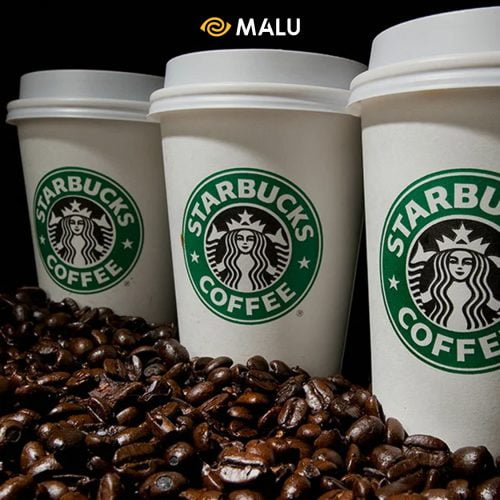
Brand Archetype – roughly translated as a model of a brand, so how important is Brand Archetype in the process of building and developing a brand, and strategizing for the brand? We will find out through this article of Malu.
Brand is like a person, and when we think of a brand it is like we imagine a person with appearance, clothes, means of transportation, face, voice, age, dimension. tall, stylish…
>>> See more:
What is Brand Archetype?
Archetype is a term coined by Swiss psychologist Carl Jung in his theory that humans have 12 basic patterns. Each of these archetypes will have their own distinct personality traits, values, attitudes, and behaviors.
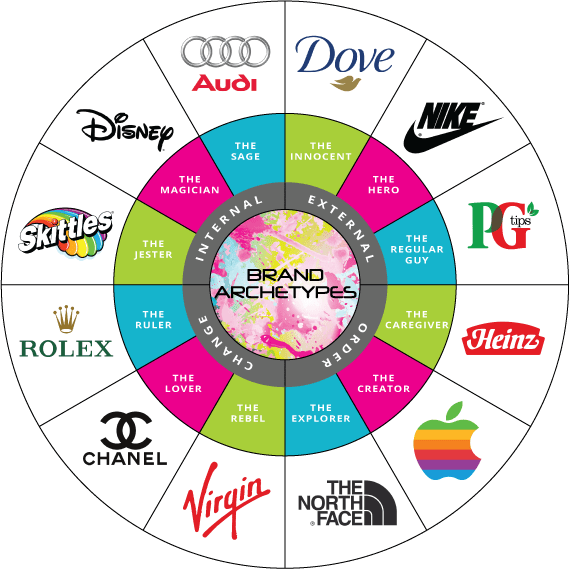 Marketing, advertising and branding have applied this model to create brand models for businesses. The idea of turning a brand – an invisible object into one of 12 models will help breathe life into the brand and bring it into people’s lives.
Marketing, advertising and branding have applied this model to create brand models for businesses. The idea of turning a brand – an invisible object into one of 12 models will help breathe life into the brand and bring it into people’s lives.
From a customer perspective, we connect to the personalities and characteristics of each Brand Archetype. It represents the most basic needs and desires of each person, contributing to bringing customers and brands closer together.
>>> Branding Strategy by Philip Kotler
A powerful Marketing and Branding tool
When you think of a magician, what comes to mind? Some say it’s someone who makes dreams come true, performs the impossible, creates something special. So if the brand has a specific personality trait, a visual appearance, a specific behavior, won’t you have clearer emotional connections?
The brand archetype is something that embraces many characters and personality traits, from a “Hero” to a “Rebel” villain; from the safety and security of “Caregiver” to the discovery and excitement of “Explorer” or from the freshness and purity of “Innocent” to the wisdom and knowledge of “Sage”
>>> Learn about Brand Architecture – Brand Structure
12 Brand Archetypes – Brand Archetypes
There are a total of 12 basic archetypes. Choosing a suitable brand model is extremely necessary, helping the brand strategy of businesses. But first, you need to understand and grasp the roles in building deep relationships with customers in your target market.
>>> Choose the right color for the brand
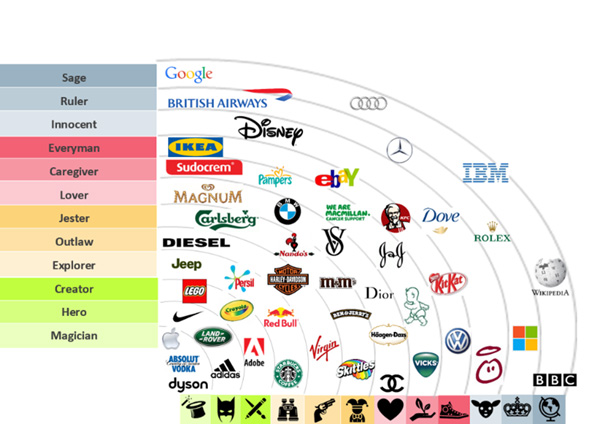
1. The Innocent – Innocent role model
Goal: Bring a sense of happiness Traits
: To be a role model that strives for goodness, purity, youth, optimism, simplicity, morality, romance and loyalty.
Cons: A bit too honest and boring
Marketing niche: Businesses with deep values, bringing trust, reliability and honesty, directly related to ethics, minimalism and possibly even recall.
Example: Dove, Coca-Cola
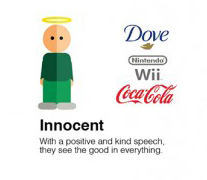
2. The Regular Guy – Ordinary people
Goal: To connect with others
Traits: Friendly, supportive, loyal, shareable, connected
Cons: May lack outstanding features
Marketing niche: Business businesses with characteristics of belonging, ownership, attachment
Example: Home Depot, eBay
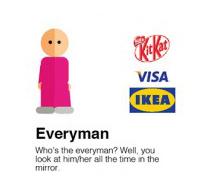
3. The Hero – Hero
Goal: Help society, the world
Traits: Courageous, bold, respectable, strong, confident, and inspirational.
Cons: Arrogant and aloof
Marketing niche: Make a positive impact in the world, solve big problems or inspire community.
Example: Nike, BMW, Duracell
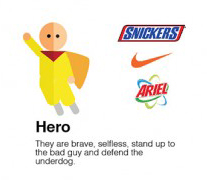
4. The Outlaw – Outlaws
Goal: Break the rules, fight with authority
Traits: Rebellion, iconic, wild, pave the way for change
Cons: Can be seen as bad influence
Marketing niche: Great face of change, role model of Robin Hood, allowing for risk and breaking the rules
Example: Harley-Davidson, Virgin (Richard Branson)
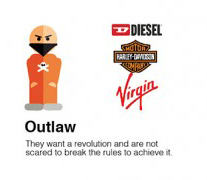
5. The Explorer – The Explorer
Goal: Seek new experiences
Traits: Restless, adventurous, ambitious, individualistic, independent, pioneer.
Cons: May not fit mainstream
Marketing niche: Exciting, adventurous, exploring
Example: Indiana Jones, Jeep, Red Bull
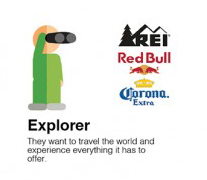
6. The Creator – The Creator
Goal: Create things of lasting value and meaning.
Traits: Creative, imaginative, artistic, entrepreneurial
Cons: May be perfect or too far removed from reality.
Marketing niche: Broad vision, helping customers express their creativity and nurture their imagination
Example: Lego, Crayola
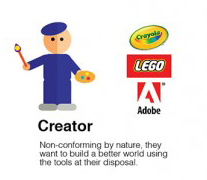
7. The Ruler – The Controller
Objective: Control, establish order from chaos Traits
: Leadership, accountability, organizational ability, model management, administrator.
Cons: Can be controlled a bit too much
Marketing niche: Help people manage, better administrate, stable order and more secure in a chaotic world.
Example: Microsoft, Barclays, Mercedes-Benz
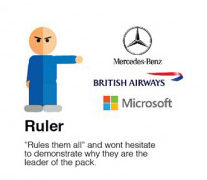
8. The Magician
Goal: Make dreams come true, create specials Traits
: Dreamy, charismatic, imaginative, idealistic, spiritual
Cons: Brings bad results by taking risks
Marketing niche: Help people change worldview, inspire change, expand awareness, consciousness
Example: Disney, Wizard of Oz, Apple
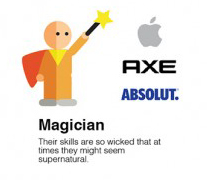
9. The Lover – Lover
Goal: Create intimacy, inspire love
Traits: Passionate, sensual, intimate, romantic, warm, committed, idealistic Cons
: Can be too dreamy, not grounded
Marketing niche: Helping people feel appreciated, belonging, connected, enjoying intimacy, building relationships
Examples: Victoria’s Secret, Godiva Chocolate
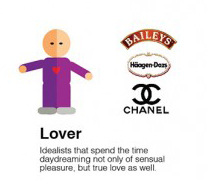
10. The Caregiver – Caregiver
Objective: Caring and protecting people around
Traits: Caring, nurturing, selfless, generous, compassionate
Cons: Being taken advantage of or exploited
Marketing niche: Help people take care of themselves, serve community service through health care, education, or aid programs.
Examples: Mother Theresa, Johnson & Johnson, Heinz
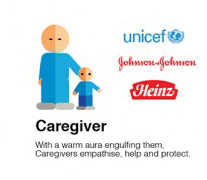
11. The Jester – Clown
Goal: Bring joy to everyone
Traits: Cheerful, humorous, light-hearted, mischievous
Cons: Can be seen as frivolous or disrespectful.
Marketing niche: Get people to have a good time, enjoy what they’re doing, and spark impulses and spontaneity
Examples: Motley Fool, Ben & Jerry’s, IKEA

12. The Sage – The Wise One
Goal: Make the world more wisdom and understanding
Traits: Knowledge, wisdom, understanding, thoughtfulness, analytical ability, mentorship, trustworthy
Cons: Can be judged a bit conservative try and think too much
Marketing niche: Helps people better understand each specific issue, provides analytical capabilities.
Example: BBC, PBS, Google, Philips
Using Brand Archetype to build a brand
Before applying the brand model, you need to really understand what your brand stands for, where the target market is and how customers will think and feel about your brand. Also consider how your business wants others to perceive you.

Understand the power of your brand
Customers often have emotional bonds with brands. Understanding this connection and applying one of the 12 brand models above will be extremely important. Brand Archetype must be created based on customer psychology and specific brand strategy .
Understanding customers
Always start with understanding the customer. Understand them as well as their behavior, purchasing decisions. Talk to your customers often. Find out why they chose their brand over competitors’ products. Market research will help you answer these questions.
Discover the emotional factors when they buy your product or service. How do they feel about your brand and your competitor’s brand?
>>> Brand strategy by customer
Build emotional bonds
Studies show that half of purchase decisions come from emotional factors. Continually dig deeper into this relationship with the customer. The messages conveyed need to be consistent in the emotional element at every touchpoint for your brand to build strong connections.
Use visual elements, icons
You can use elements related to images and icons to engrave into the customer’s brain. That’s why we need brand logo right?
Apply Brand Archetype
Once you have a complete picture of your brand and potential customers, choose a suitable brand model. Here are 3 classic examples of brand archetypes for your reference:
1. The Explorer. Jeep. Finding new roads, experiencing new things
2. The Sage. PBS. Understand the world and your place in it. Study, research, thirst for knowledge.
3. The Rebel: Harley Davidson. Break, subvert the rules, take risks, show personality.
The above examples have really touched the customer’s deep needs, their desires and emotions.
Translating the brand model into communication messages
The final and most important part of the brand archetype development process is crafting the right messages. Once you’ve identified the emotional element of the customer with the brand, now is the time to take specific steps to evoke that emotion.
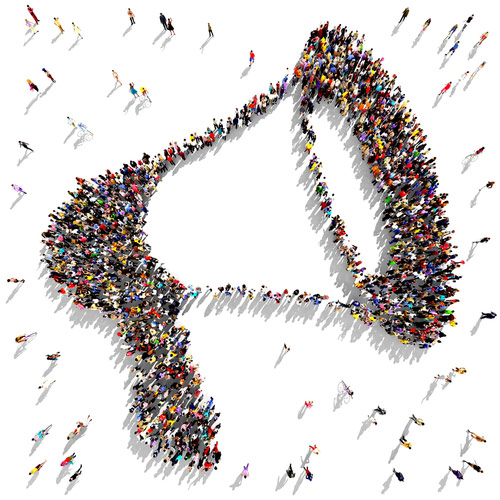
Passion, enthusiasm.
Messages need to be conveyed in a passionate and engaging way, if done well, customers will receive the message more naturally, thereby the ability to recognize information is also better.
Employees in the business are also an important team to convey the message to, because if you do not make your employees understand the brand model, it is difficult to make customers understand.
Based on facts
Make sure your messages are authentic, felt with the eyes, ears, and minds of your customers based on real experiences with your business. If you’re trying to tell your brand’s story, it needs to be based on the customer’s existing experience, otherwise it’s easy to backfire.
Consistency
The message needs to be conveyed consistently across every touchpoint with the customer to be most effective.
Differentiation
Highlight the differences that make you stand out in the eyes of customers between your brand and direct competitors.
Inspire customers.
Customers are the most important factor to build a brand. Help them go from being a regular customer to becoming a loyal fan or “brand ambassador” if possible.
Create a delivery role for the customer.
Word of mouth is a very powerful and effective form. Try to build sharing, encourage your own customers to mention the brand more with their friends, family and relatives.




